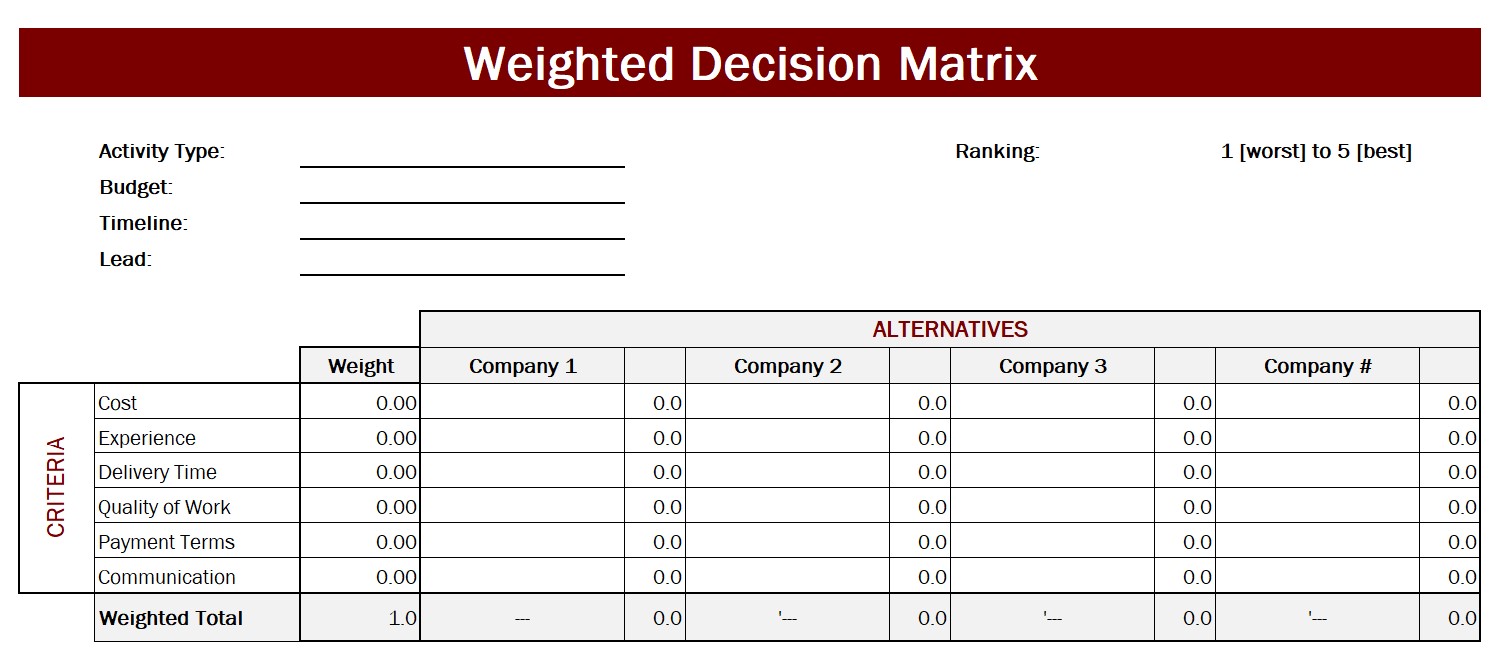In-House vs Outsource
51 Developing a Network of Outsourced Partners

Given the limited resources available for NPOs, many of its staff often wear multiple hats and perform various roles within the organization. However, in some cases, the person(s) may not be able to perform all the tasks for developing and managing an IMC campaign and requires an outside party to help.
Defining the Organization’s Needs
Before looking into outsourcing activities, the organization needs to understand which tasks require outsourcing and which can be performed in-house. In doing so, an NPO can then establish a partnership with a third-party agency that the organization can reliably work with to avoid costly oversights.
For example, if you find you’re preoccupied with marketing and outreach, while the core functionalities of your organization are falling by the wayside, outsourcing marketing challenges can help you reallocate your internal resources to your core business requirements. Choosing strong outsourcing partners is often cost-effective in the long run, and in marketing scenarios, can lead to more effective outreach.
To make a well-informed decision when outsourcing, the organization should first begin with the essential information that encompasses the scope of work required from short-term contractors or long-term partners:
-
Define the campaign goal: Have a clear understanding of the type of services the organization needs to outsource. Set out the list of tasks along with the expectations and goals that the outsource team will need to achieve. A well-defined campaign goal will help negotiate appropriate terms and prevent paying for additional items or services that are not necessary for the campaign.
-
Set a realistic budget: Depending on the campaign requirements, having an allocated budget can set the range of acceptable pricing that the organization is willing to spend. Setting an unrealistic budget, however, may constrain the selection process and even lead to unreliable partners.
-
Establish a timeline: Clearly stating a deadline will help narrow the selection process even further. The organization can easily communicate the degree of commitment they will require from the outside partners.
Common Intermediaries
Ad Agencies
Ad agencies specialize in building communities and brands, utilizing a wide variety of paid and organic channels. This can include social networks such as Facebook, Linkedin, Twitter, and Instagram, as well as paid ad production on popular TV channels or affiliate advertising. Ad agencies utilize the entire marketing mix to craft customized brand-building initiatives and campaigns centred on the unique target market and product of their strategic partners. When it comes to creating an IMC campaign, outsourcing marketing outreach can be an extremely beneficial partnership for a non-profit. However, depending on the campaign, there may be other aspects that would benefit from outsourcing as well.
Distribution
Some of the most common intermediaries are related to product distribution. Moving a good from the producer to the buyer is logistically complex and often handled by an intermediary such as FedEx or UPS. These organizations can utilize economies of scale and a vast network of resources to offer highly specialized delivery services at a relatively low cost and, more importantly, low risk.
E-commerce and Web Development
Maintaining an online presence nowadays is relatively straightforward, so more and more companies do this internally. However, if your brand/campaign utilizes an online storefront or relies on e-commerce, that can be a trickier venture. As a result, some organizations prefer outsourcing this as well.
Public Relations
It helps educate the public, increase donations, find volunteers, and manage the crisis. Public relations can also increase the awareness of a nonprofit and engages donors through online and face-to-face events. Moreover, a public relations firm can handle all the marketing aspects of the nonprofit.
Identifying Resources
There are two methods when it comes to identifying and utilizing the resources available within your organization:
- Create your strategy and goals and then find the resources required to achieve them.
- Identify the resources you currently have right away then work within those parameters.
Creating a rough budget early on will help you assess what resources and funds are available to you. Resources you will want to consider are:
- Human (people, skills and time)
- Financial (funding)
- Intellectual (access to information)
- Material (access to equipment, tools, etc.)
Budgeting
Once the resources available to you have been identified you can now create a budget. If funding is likely to be an issue, there are organizations, foundations, and even government grants that can help. If you can identify resources within your organization, such as a video camera, or a filmmaker, you can limit the overall costs of finding those resources elsewhere. Also, partnering with other organizations that have similar goals can help bring together resources that don’t currently exist with your organization.
Contracting Outsourced Activities
Once the above key information is established, the organization can identify and compare potential third-party partners. There are various methods and channels an organization can use to find reliable and credible partners:
- Personal Network: Reach out to people within the organization’s networks who may be able to perform the required jobs. Alternatively, ask if they have used similar services and are willing to provide recommendations.
- Freelancing Websites: In the current gig economy, multiple platforms offer a plethora of short-term contractors or freelancers to perform specialized tasks. Like Upwork.com, Fiverr.com and Freelancer.com offer different talents for different jobs such as copywriting, graphic designs, and video production at varying price ranges.
- Forums: Facebook groups and Reddit subgroups are a few modern ways to look for people performing contract work. These sites allow for highly niched groups to get together and advertise their personal or company’s services.
- Established Information Centres: Seek advice from reliable business advisors within the organization or local business support organizations, such as chambers of commerce. Often marketing and PR firms list their business in directories within these organizations to be discovered in their area.
- Business Associations: Attending local business events, trade associations, and exhibitions are a great way to connect with local agencies and contractors. It is a personalized approach that is effective in identifying if the potential partner is credible and relevant.
- Invite by RFP: If applicable, the organization may choose prospects by inviting agencies to submit to an RFP. An RFP is an effective way to draw group suppliers and vendors for a campaign that requires long-term and more hands-on support.
Comparing Outsource Partners
Comparing outsource partners can be based on the following group of criteria:
- Quality of service,
- Flexibility and adaptability,
- Ease of communication,
- Experience,
- Payment terms,
- Value-added service.
Price and delivery time are not mentioned here deliberately since they are the tangible factors that can be easily compared with each other but are usually threshold factors. The tangible factors are generally the criteria of the greatest weight in the evaluation process.
When choosing outsource partners, all types of criteria can be considered. Often, they form close relationships. For example, price is inextricably linked to the quality of their work or their experience. However, immeasurable factors such as payment terms and the partner’s flexibility have an indirect effect on the price of the service. The organization can also base the selection process by the type of projects the agencies or the freelancers have done and compare public ratings like Google and Facebook reviews.
The criteria presented may not always meet the needs of the organization. Therefore, they should be regarded as a starting point. If required, the list of criteria can be extended or shortened.
The qualifying partners that meet the organization’s standards and requirements will then be shortlisted as potential candidates.
Assessing and Choosing Outsource Partners
The next stage of the selection process is the assessment of the shortlisted agencies. Having established the criteria, an organization can analyze the agencies in the given circumstances by applying weight factors. Each criterion is assigned a weighted factor reflecting what is most important to the organization. The agencies are also graded on a scale range from 1 to 5 (1 being the worst-rated and 5 the best). The grading is multiplied by the weight factor and then tallied to achieve a total rating.
The organization can use a simple decision matrix to measure the alternatives (pictured below):

- Campaign Information (activity type, budget, timeline, lead)
- Set of criteria based on the organization’s preference and values.
- Weight set out for each criterion.
- Name of prospective partners for short-term or long-term contract work.
- Ranking assigned based on the criteria: 1 being the worst and 5 being the best.
- The ranking is multiplied by the weight then added as the total weighted average for each company.
- Determines the total weighted average of the company which is then compared against each of the other prospecting companies having the highest or lowest totals.
Resource: Decision Matrix Template
Attribution
This page contains material taken from:
Boundless. (n.d.). Marketing intermediaries. Retrieved July 15, 2020, from http://oer2go.org/mods/en-boundless/www.boundless.com/business/textbooks/boundless-business-textbook/product-distribution-16/distribution-channels-100/marketing-intermediaries-469-8202/index.html
Business Queensland. (2016). Choosing suppliers for your business. Retrieved from https://www.business.qld.gov.au/starting-business/planning/suppliers/finding-suppliers/choosing
Kawa, A., & Koczkodaj, W. W. (2015, December 24). Supplier Evaluation Process by Pairwise Comparisons. Retrieved from https://www.hindawi.com/journals/mpe/2015/976742/
Khandwala, Dhwanil. (2017, February 14). 10 benefits of outsourcing your digital marketing activities 2017. Retrieved from https://doi.org/10.5281/zenodo.803601
Pratt, M. (2020, March 31). How to choose the right supplier for your business. Business.org. Retrieved from https://www.business.org/software/supplier/how-to-choose-the-right-supplier-for-your-business/
Supplier selection process. (2009). Retrieved from https://www.infoentrepreneurs.org/en/guides/supplier-selection-process/
Says, Video Media, et al. (2010, May 27). “A Step-by-Step Guide to Creating a Media Strategy.” Socialbrite. Retrieved from www.socialbrite.org/2010/05/27/create-distribute-media-for-a-campaign/.

